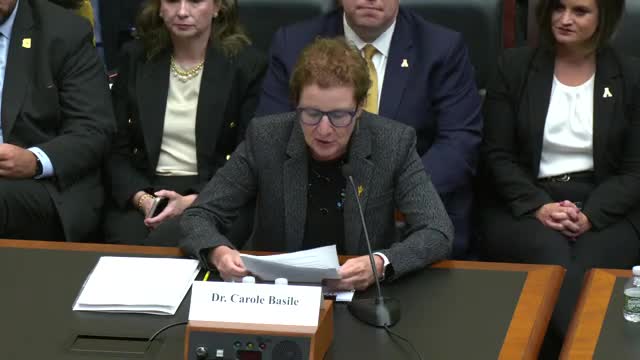Revolutionizing Teacher Preparation to Combat Workforce Crisis
September 25, 2024 | Education and Labor: House Committee, Standing Committees - House & Senate, Congressional Hearings Compilation
This article was created by AI summarizing key points discussed. AI makes mistakes, so for full details and context, please refer to the video of the full meeting. Please report any errors so we can fix them. Report an error »

In a recent government meeting, education experts highlighted critical issues surrounding teacher preparation and retention, emphasizing the need for systemic changes to address the ongoing teacher shortage. Dr. Basile from Arizona State University presented a compelling argument that the current model of teacher preparation is flawed, primarily due to its one-size-fits-all approach. He noted that the traditional \"one teacher, one classroom\" model places unrealistic demands on educators, particularly new graduates, leading many to leave the profession.
Dr. Basile proposed a shift towards a more collaborative and specialized workforce, advocating for the establishment of teams of educators with diverse skills and expertise. This approach, part of ASU's Next Education Workforce initiative, aims to enhance personalized learning for students and provide better professional development opportunities for teachers. The initiative plans to partner with over 150 schools across 40 school systems in 15 states, impacting approximately 25,000 students and 1,000 educators.
The discussion also touched on the importance of compensating teacher candidates for their work during training, as many currently juggle multiple jobs to support themselves. Dr. Basile stressed the need for clearly defined responsibilities for teacher candidates, allowing them to gain experience progressively without being overwhelmed by expectations meant for seasoned educators.
Dr. Melba Spooner from Appalachian State University echoed these sentiments, sharing insights into her institution's commitment to preparing teachers through research-based curricula and extensive clinical experiences. She highlighted the importance of classroom management and literacy instruction, ensuring that graduates are equipped with the necessary skills to thrive in challenging educational environments.
Both experts called on government support for innovative teacher preparation models that prioritize accessibility and attractiveness of the profession. They urged for recognition of school systems that effectively manage their human capital to improve learning outcomes, framing the teacher shortage not merely as a labor issue but as a fundamental design challenge within the education workforce.
Dr. Basile proposed a shift towards a more collaborative and specialized workforce, advocating for the establishment of teams of educators with diverse skills and expertise. This approach, part of ASU's Next Education Workforce initiative, aims to enhance personalized learning for students and provide better professional development opportunities for teachers. The initiative plans to partner with over 150 schools across 40 school systems in 15 states, impacting approximately 25,000 students and 1,000 educators.
The discussion also touched on the importance of compensating teacher candidates for their work during training, as many currently juggle multiple jobs to support themselves. Dr. Basile stressed the need for clearly defined responsibilities for teacher candidates, allowing them to gain experience progressively without being overwhelmed by expectations meant for seasoned educators.
Dr. Melba Spooner from Appalachian State University echoed these sentiments, sharing insights into her institution's commitment to preparing teachers through research-based curricula and extensive clinical experiences. She highlighted the importance of classroom management and literacy instruction, ensuring that graduates are equipped with the necessary skills to thrive in challenging educational environments.
Both experts called on government support for innovative teacher preparation models that prioritize accessibility and attractiveness of the profession. They urged for recognition of school systems that effectively manage their human capital to improve learning outcomes, framing the teacher shortage not merely as a labor issue but as a fundamental design challenge within the education workforce.
View full meeting
This article is based on a recent meeting—watch the full video and explore the complete transcript for deeper insights into the discussion.
View full meeting